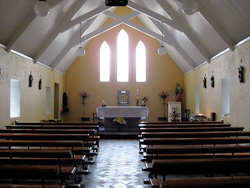
Bold, But True
Powered loudspeakers, as a total sound system design, can cost less than equivalent conventional component PA systems.
For this bold statement to be true, one must consider everything that makes up a PA such as crossovers, equalizers, compressor/limiters, loudspeaker processors, amplifiers, rack space and cabling.
Material cost of an active loudspeaker remains the same when compared to a passive-type box. Further, active and passive designs both require crossover networks, equalization, compressor/limiting, time alignment and power. Don’t underestimate this reduction in required space.
With powered loudspeakers there is much less gear to install and store. Most importantly, once your loudspeaker system goes “active,” the total system cost is reduced.
Let’s break this down into fundamentals, and see how this is achieved.
The audio phrase “front-end” refers to the first part of the signal path. In this case, it is the input. Depending on the loudspeaker application, this input will be at line level, mic level, or both.
A good front-end design is essential to prevent those nasty RF signals from bleeding in the audio signal. It’s pretty embarrassing to be sitting in church to hear a local trucker, on his CB radio, bled through the sound system during the sermon saying “Some smoky bear is on his a—-.” Not good. So why not use technology that prevents this issue?
For many small jobs, an obvious cost savings comes when no mixer is required. Still, every advantage comes at a price. As such, from a design and material cost viewpoint, quality front-end design is one of the few areas where active loudspeakers can add direct cost.
Back-End Electronics
The back end of the electronics in an active loudspeaker are where processing, such as active crossovers, EQ points, compressor/limiters and delay, takes place. These multiple functions are why considerable savings can be via internal processing compared to external digital speaker processing.
With an active loudspeaker, electrical parameters are pre-determined by the manufacturer. This is not all digital processing wizardry either. Precise filtering can also be implemented using low-cost analog components. In fact, it’s still cheaper to use analog components compared to operating in the digital domain.
As soon as there is a need to have external processing adjustments, this may no longer be true. However, if tweaking is ever allowed, the main purpose of an out-of-the-box, acoustically aligned loudspeaker would be effectively eliminated
Eventually, the digital domain will become more cost effective over analog, especially when audio signal remains all-digital from the mixer to the loudspeaker front-end. The high cost of digital is the conversion from analog to digital and from digital back to analog.
